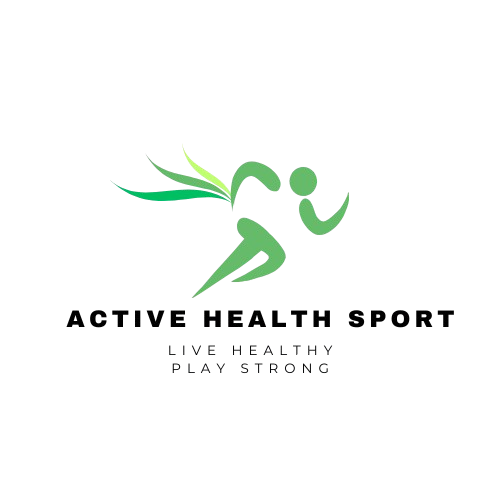In today’s fast-paced world, fatigue and mental fog are common struggles. Power naps can be a game-changer if you’re an overworked professional, a student juggling multiple responsibilities, or an athlete needing peak performance. Often underestimated, a short, well-timed nap can significantly improve mental clarity, boost energy, and enhance overall productivity.
In this blog, we’ll explore the science behind power naps, the ideal duration and timing, their benefits, and practical tips to incorporate them into your daily routine. Let’s stay with us!
The Ultimate Science Behind Power Naps
Power naps are brief periods of sleep, typically lasting between 10 to 30 minutes, designed to recharge your mind and body without dipping into deeper stages of sleep like REM. Unlike longer naps, which can sometimes lead to grogginess due to sleep inertia, power naps offer a quick, effective boost to your energy and mental clarity.
So, what makes power naps so effective? It all comes down to the science of sleep cycles. During a power nap, your body enters the initial stages of light sleep, where restorative processes begin to take place. These stages are perfect for feeling refreshed and alert without the sluggishness that often accompanies waking from deep sleep.
Proven Benefits of Power Naps
- Enhance Memory Consolidation
Sleep is essential for memory and learning. During a power nap, your brain processes and organizes information, reinforcing what you’ve learned and making it easier to recall later. Whether you’re a student cramming for exams or a professional absorbing new skills, a quick nap can significantly improve your ability to retain information. - Boost Alertness and Cognitive Function
Feeling sluggish after lunch? A quick power nap can help you regain focus and sharpen your decision-making abilities. Research suggests that even a 10-minute nap can enhance mental alertness, allowing you to tackle tasks with renewed vigor and clarity. - Recharge Energy Levels
The natural midday energy slump is something most people experience. Instead of reaching for another cup of coffee, try a power nap. It provides a natural boost to your energy levels, leaving you feeling rejuvenated and ready to take on the rest of your day. - Improve Emotional Well-Being
Short naps also have a calming effect on your nervous system. They can reduce stress levels by lowering cortisol and the stress hormone, and help you close challenges with a more balanced mindset. - Support Physical Performance
For athletes, power naps can improve reaction times, motor skills, and even endurance. By giving your body a moment to reset, you’ll find yourself better equipped to perform at your best.
Why Timing Matters
The effectiveness of a power nap is tied to its timing. The best time to take a power nap is during the early afternoon, typically between 1 PM and 3 PM. This is when your circadian rhythm naturally dips, making it the ideal window to rest without disrupting your nighttime sleep. Avoid napping too late in the day, as it might interfere with your ability to fall asleep at bedtime.
What is the Ideal Power Nap Length?
The length of your nap determines the benefits you’ll receive:
- 10–20 Minutes: Ideal for a quick recharge, boosting alertness and focus without grogginess.
- 30 Minutes: Provides a deeper reset but may lead to mild grogginess upon waking.
- 60–90 Minutes: While this duration allows for a full sleep cycle, it moves beyond a “power nap” and is better suited for those who are sleep-deprived.
The Science of Light Sleep
During a power nap, your body remains in the lighter stages of sleep, where your brain waves slow down slightly, and your muscles relax. This phase is enough to provide restorative benefits without diving into deeper sleep stages that can make waking up more challenging.
Incorporating regular power naps into your routine can lead to improved productivity, better emotional well-being, and a healthier, more balanced lifestyle.
Also read the Latest: How Long Before Bed Should You Stop Using Your Phone?
What are the top Benefits of Power Naps?
Power naps are a quick way to recharge, and they’re a scientifically proven method to enhance your overall well-being. These short bursts of sleep pack a powerful punch, providing mental, emotional, and physical benefits without the downsides of longer naps. Whether you’re looking to improve your productivity, reduce stress, or simply boost your energy, power naps can play a pivotal role in your daily routine.
Let’s explore some of the incredible benefits of incorporating power naps into your schedule.
- Improved Focus and Cognitive Function
Power naps act as a reset button for your brain. After just 20 minutes of rest, you may notice better problem-solving skills, sharper focus, and quicker reflexes. This is because short naps allow the brain to clear adenosine, a chemical linked to fatigue. - Increased Energy Levels
Unlike caffeine, which can lead to jitteriness, power naps provide a natural energy boost without side effects. They rejuvenate your body and mind, preparing you for the rest of your day. - Stress Reduction
A short nap can lower cortisol levels, the stress hormone. Taking time to relax even briefly can significantly reduce anxiety and improve mood. - Enhanced Creativity
Many creative breakthroughs occur after periods of rest. Power naps can enhance divergent thinking, helping you approach problems from fresh perspectives. - Boosted Physical Performance
For athletes, power naps contribute to better reaction times, stamina, and post-workout recovery.
What is the Ideal Duration of a Power Nap?
The duration of your nap can make all the difference between feeling refreshed and waking up groggy. A power nap, by definition, is short and effective, helping you recharge without disrupting your sleep cycle. The key is understanding how different lengths of naps impact your body and mind.
However, exceeding the ideal time frame for a power nap might bring diminishing returns, such as grogginess or sleep inertia. Let’s break down the best nap durations and their specific benefits so you can choose what works for you.
10–20 Minutes: This duration is the sweet spot for a quick recharge. A 10–20 minute nap boosts alertness, energy, and focus without causing grogginess. It’s perfect for a midday pick-me-up or a quick break during a busy day.
30 Minutes: A slightly longer nap can improve decision-making skills, memory retention, and cognitive abilities. However, this duration may lead to mild grogginess upon waking as your body transitions out of deeper sleep stages.
60–90 Minutes: For those needing deeper recovery, a 60–90 minute nap allows you to complete a full sleep cycle, enhancing creativity, emotional regulation, and physical recovery. While this goes beyond a typical power nap, it’s ideal for individuals who require significant rejuvenation.
Remember, the ideal duration depends on your specific needs, schedule, and how much rest you’re trying to catch up on!
What is the Best Time to Take a Power Nap?
Timing a power nap correctly is just as important as its duration. A well-timed nap can work wonders for your energy and focus, while a poorly timed one might leave you feeling groggy or disrupt your nighttime sleep. To maximize the benefits of power napping, it’s crucial to understand how your body’s natural rhythms, known as circadian rhythms, play a role.
The best time for a power nap typically falls in the early afternoon, between 1 PM and 3 PM. This period aligns with a natural dip in energy levels that many people experience after lunch. During this time, your body is primed for a short rest, making it easier to fall asleep quickly and wake up feeling refreshed.
Avoid napping too late in the day, such as after 4 PM, as it can interfere with your ability to fall asleep at night. Late naps risk pushing your bedtime back, disrupting your sleep cycle, and leaving you feeling less rested overall.
For individuals with flexible schedules, experimenting with different nap times can help identify what works best. For example, shift workers or those with irregular schedules may find late-morning naps effective for staying alert during long hours.
It’s also essential to consider your overall sleep quality. If you’re consistently getting less than seven hours of sleep per night, a midday nap can help bridge the gap and prevent long-term fatigue.
Top Tips for Effective Power Napping
- Create a Comfortable Environment
Find a quiet, dark space with minimal distractions. Use an eye mask or noise-canceling headphones if needed. - Set an Alarm
To avoid oversleeping, set an alarm for 20–30 minutes. This ensures you wake up refreshed and not groggy. - Use Relaxation Techniques
If you struggle to fall asleep quickly, try deep breathing or visualization exercises to relax your mind. - Incorporate Napping into Your Routine
Consistency matters. Regular power naps can train your body to relax and recover efficiently. - Combine Power Naps with Caffeine
Known as the “coffee nap,” drinking coffee before a nap can amplify its benefits. Since caffeine takes about 20 minutes to kick in, you’ll wake up doubly alert.
Also Read the Latest: How Sleep Tourism Became 2025’s Leading Wellness Trend
Power Naps vs. Long Naps: Which is Better?
Napping is a proven way to recharge your body and mind, but not all naps are created equal. The key difference between power naps and long naps lies in their duration, benefits, and potential downsides. Understanding which type of nap works best for your needs can help you maximize their effectiveness.
Power Naps: The Quick Refresh
Power naps, typically lasting 10 to 30 minutes, are designed to give you a quick energy boost without diving into deeper stages of sleep like REM. Because they are short, power naps help avoid sleep inertia and a groggy, disoriented feeling that can occur when waking from deep sleep. These naps are perfect for improving alertness, enhancing focus, and reducing stress.
Power naps are especially beneficial for those who need a mid-afternoon pick-me-up without interfering with their nighttime sleep schedule. They’re ideal for students, professionals, or anyone looking for a quick reset during a busy day.
Long Naps: Deeper Recovery
Long naps, lasting 60 to 90 minutes, allow your body to cycle through deeper stages of sleep, including REM. These naps are more restorative and can help improve memory, creativity, and overall cognitive function. They’re particularly useful for individuals who are severely sleep-deprived or recovering from intense physical or mental exertion.
However, long naps come with potential drawbacks. Waking up during deep sleep can lead to sleep inertia, making it harder to feel refreshed and alert. Additionally, long naps taken late in the day can disrupt your nighttime sleep schedule, making it difficult to fall asleep at your usual bedtime.
Which is Better?
The choice between power naps and long naps depends on your specific needs:
- If you’re looking for a quick energy boost to get through the day without compromising your nighttime sleep, power naps are the way to go. They’re efficient, easy to fit into a busy schedule, and help you stay sharp and focused.
- If you’re recovering from significant sleep debt or need deeper mental and physical recovery, a long nap might be more appropriate. However, it’s best to reserve long naps for weekends or days when you don’t need to wake up immediately alert.
Power naps are perfect for daily refreshment, offering quick and effective benefits without the risk of grogginess or sleep disruption. Long naps, while restorative, are better suited for occasional use when recovery is the primary goal.

How to Incorporate Power Naps into a Busy Lifestyle?
In today’s busy world, finding time to rest can be a challenge. However, integrating power naps into your daily routine can be an effective way to boost energy, improve focus, and reduce stress without disrupting your day. Whether you have a busy work schedule, school commitments, or family responsibilities, there are several creative ways to make power naps a part of your lifestyle.
Here’s how you can easily incorporate short naps into your hectic day:
- During Lunch Breaks
Lunch breaks are one of the best opportunities to take a quick power nap. Instead of spending your break scrolling through your phone or rushing through tasks, use this time to rest and recharge. A 10-20 minute nap during lunch can help restore your energy, boost productivity, and keep you alert for the rest of the day. Consider finding a quiet space where you can relax without distractions for maximum effectiveness. - On-the-Go
Busy schedules often mean you’re constantly on the move, but that doesn’t mean you can’t take a power nap when you need it most. Nap pods, car seats, or even reclining chairs at work or in public spaces can provide a convenient resting spot. Just make sure the environment is comfortable and quiet enough to relax, even if it’s just for a few minutes. Power naps on the go are an excellent way to stay refreshed while traveling or during busy workdays. - Tech-Supported Napping
If you find it difficult to fall asleep or make the most of a short nap, technology can lend a helping hand. Apps like Calm, Headspace, or simple sleep trackers can guide you into relaxation and create the perfect environment for a restful nap. These apps often include soothing sounds, guided meditations, or sleep-focused techniques to help you wind down, making it easier to take a quick nap and wake up feeling rejuvenated.
Who Benefits Most from Power Naps?
Power naps are a universal tool for recharging energy, but their impact can vary depending on lifestyle and daily demands. From busy professionals to dedicated athletes, these short naps offer targeted benefits that cater to specific needs. Let’s explore who gains the most from incorporating power naps into their routine:
- Professionals: Combat burnout and improve focus during long workdays.
- Students: Enhance memory retention and stay sharp during study sessions.
- Athletes: Boost recovery and physical performance.
- Parents: Manage fatigue while juggling responsibilities.
What are the Common Myths About Power Naps?
Power naps are often misunderstood, and despite their proven benefits, various myths have created skepticism about their value. These misconceptions can prevent people from fully embracing the advantages of a quick nap. Let’s debunk some of the most common myths about power naps and uncover the truth behind them:
- “Napping Makes You Lazy”
Many believe that taking a nap during the day is a sign of laziness or a lack of motivation. However, research shows that power naps enhance productivity, creativity, and problem-solving skills. Far from being a waste of time, a well-timed power nap can actually make you more efficient and proactive in tackling your tasks. - “Only Sleep-Deprived People Need Naps”
While power naps are undoubtedly beneficial for those who are sleep-deprived, they are equally valuable for well-rested individuals. A short nap can serve as an energy boost, helping you stay sharp and focused throughout the day. Even those with a regular sleep schedule can use power naps to recharge and maintain peak performance. - “Naps Disrupt Nighttime Sleep”
This myth stems from the idea that daytime sleep might interfere with falling asleep at night. In reality, power naps are designed to complement your sleep cycle, not disrupt it. When taken at the right time and early to mid-afternoon, a short nap can refresh your body and mind without affecting your ability to get a good night’s sleep.
Closing Thoughts | The Power of Power Naps for a Healthier Life
Rather than pushing through fatigue, incorporating power naps into your daily routine allows you to recharge, combat mental fog, and sharpen your focus. The beauty of power naps lies in their simplicity. They don’t require much time but provide significant benefits.
They help reduce stress, enhance creativity, and even boost physical recovery. By recognizing the value of rest and making it a priority, you’re not just taking a break, you’re making a strategic move toward better health and productivity.
At Active Health Sport, we believe in the importance of balance, and rest is a critical component. While staying active, eating well, and staying hydrated are essential for maintaining health, proper rest, including power naps, should not be overlooked. Incorporating these short breaks into your schedule not only helps you stay energized but also supports long-term health.
We’d love to hear your thoughts on how power naps are influencing your daily routine! How have power naps helped improve your productivity, focus, or overall well-being? Share your experiences, questions, or tips in the comments below, or feel free to reach out to us via email. If there’s a specific aspect of power naps or sleep you’d like us to cover, don’t hesitate to let us know!
You might also like…
- Active Recovery for CrossFitters: Walking & Mobility Explained
 CrossFit pushes athletes to their physical limits, lifting heavy, sprinting, jumping, and performing high-intensity functional movements. While the intensity delivers impressive gains, it also places tremendous stress on muscles, joints, and the nervous… Read more: Active Recovery for CrossFitters: Walking & Mobility Explained
CrossFit pushes athletes to their physical limits, lifting heavy, sprinting, jumping, and performing high-intensity functional movements. While the intensity delivers impressive gains, it also places tremendous stress on muscles, joints, and the nervous… Read more: Active Recovery for CrossFitters: Walking & Mobility Explained - How Walking and Stretching Boost CrossFit Recovery (Duo)
 CrossFit recovery, athletes often chase intensity, heavy lifts, quick transitions, and heart-racing WODs (Workouts of the Day). Yet, the key to consistent progress isn’t just in the effort you put inside the box,… Read more: How Walking and Stretching Boost CrossFit Recovery (Duo)
CrossFit recovery, athletes often chase intensity, heavy lifts, quick transitions, and heart-racing WODs (Workouts of the Day). Yet, the key to consistent progress isn’t just in the effort you put inside the box,… Read more: How Walking and Stretching Boost CrossFit Recovery (Duo) - How Nutrition Impacts Sleep: Foods That Help (and Hurt) Your Night’s Rest
 You Are What – and When – You Eat We often think of sleep as a nighttime habit, but the truth is that good sleep begins with what you eat during the day.… Read more: How Nutrition Impacts Sleep: Foods That Help (and Hurt) Your Night’s Rest
You Are What – and When – You Eat We often think of sleep as a nighttime habit, but the truth is that good sleep begins with what you eat during the day.… Read more: How Nutrition Impacts Sleep: Foods That Help (and Hurt) Your Night’s Rest

Kait Amazra is the founder and lead writer of Active Health Sport. With over 25 years of experience in health, fitness, and wellness education, Kait combines professional expertise with a passion for helping people live stronger, healthier, and more balanced lives.
As a licensed health and fitness professional, Kait has worked alongside industry experts to deliver evidence-based insights on physical activity, nutrition, recovery, and holistic well-being. Through Active Health Sport, Kait’s mission is to make trusted, practical, and science-backed health information accessible to everyone, from beginners building new habits to athletes seeking peak performance.

